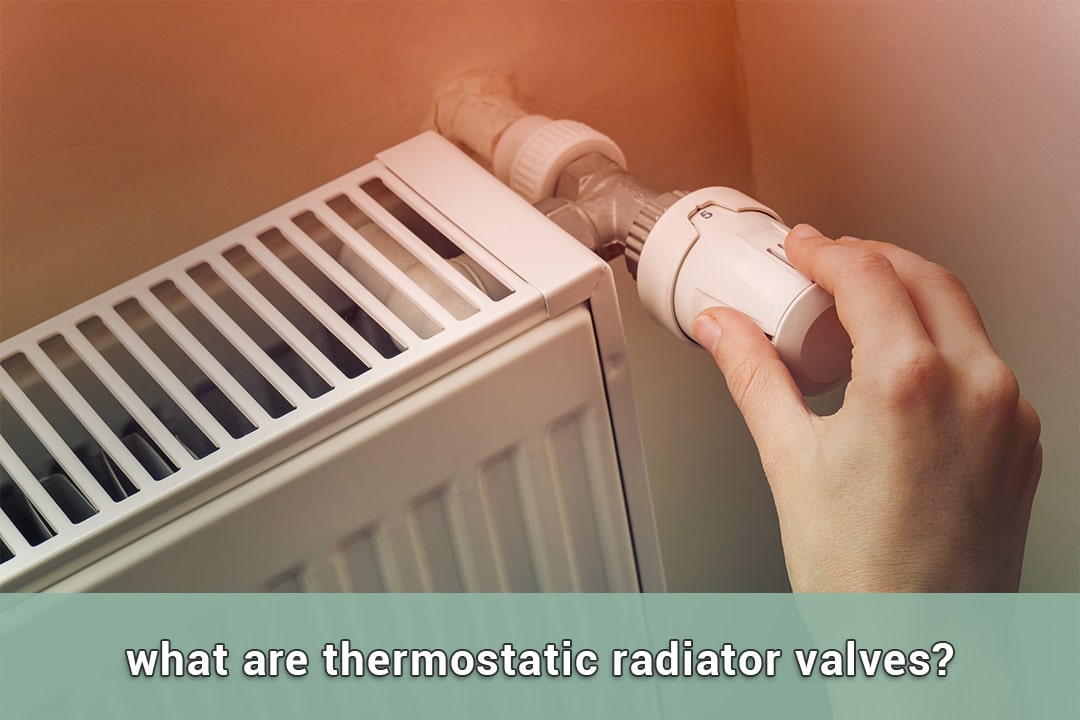Table of Contents
Thermostatic radiator valves (TRVs) are an important part of any home heating system. With these valves, you can change the temperature in a room to your liking. TRVs save energy, lower heating costs, and make homes more comfortable.
Based on the temperature of the room, TRVs control how much hot water goes to the heater. You can heat each room to your liking by setting a different temperature for each one. You can raise the temperature in the main living areas and lower it in places that aren’t used very often.
This guide for beginners explains what thermostatic radiator valves do, their benefits, how to install them, and how to keep them in good shape. Also, we’ll talk about different types of TRV and answer FAQs.
This guide will show you how to use adjustable radiator valves to make your heating system work better or change the temperature in your home.
Understanding Thermostatic Radiator Valves (TRVs)
What Are Thermostatic Radiator Valves?
In a heating system, TRVs control how much hot water goes to the heaters. These valves are made up of switch heads and valve bodies. The valve body controls the flow of hot water from the heater, and the thermostatic head checks the temperature of the room and makes changes to the valve based on what it finds.
TRVs have numbered knobs that let you change the temperature in a room. Most of the time, the numbers on the clock show temperature ranges from 10°C to 30°C. The dial controls the flow of hot water through the heater, which keeps the room at the right temperature. This way, you can heat each room to your liking and save energy by not heating rooms that aren’t being used.
The Significance of TRVs in Home Heating
When heating a home, thermostatic radiator valves are very useful. It saves energy and makes the rooms more comfortable because each one has its own temperature control. TRVs save money on heating bills and energy use.
One big benefit of TRVs is that they can change room temps based on how they are being used. You can lower the temperature in places that aren’t being used very often, like spare bedrooms or storage areas. This focused heating method saves the most energy by only heating the rooms that are actually being used.
TRVs save energy and let you change the temperature, which makes you more comfortable. With a TRV, you can set the temperature to your liking, so your home is comfortable all year.
To fix a broken dip tube, you need to replace it. Because the tube is located at the bottom and runs along the tank, so it’s a good idea to call a plumber for help.
Key Benefits of Installing TRVs
Thermostatic radiator valves (TRVs) for the home are very helpful in many ways. These valves make it easier to handle the heating system, which saves money and energy. To heat areas to the right temperature for each person, TRVs control the flow of hot water to each radiator. This saves energy. This custom heating method can cut heating costs by a large amount. TRVs make a living place cosy by letting you change the temperature.

Energy Efficiency and Cost Savings
Thermostatic radiator valves (TRVs) are great because they save money and energy. TRVs save money on heating costs and wasted energy because they let you control the temperature in each room separately. Take a look at these important points:
- Use less energy: TRVs let you set the temperature in each room to your liking, so rooms that aren’t being used or are empty use less energy.
- Make the most of the heat output: TRVs control the flow of hot water to heaters so that rooms don’t get too hot.
- Savings on costs: By focusing warmth on certain areas, TRVs can lower energy use and heating costs.
- Flexibility and control: TRVs make it easy to change room temperatures for your own comfort and to control your heating system.
Putting in TRVs can make your heating system work better, which will save you money and energy.
Enhanced Comfort and Temperature Control
With a thermostatic radiator valve (TRV), you can save energy and money while making your home more comfortable and controlling the temperature. Take a look at these important points:
- Adjustable temperature settings: TRVs let you set the temperature of a room to your liking so you can be as comfortable as possible.
- Even heating: TRVs heat rooms evenly by sending hot water to radiators, which reduces cold spots and makes the room more comfortable.
- Works with room thermostats: You can use a TRV to control the temperature of your home with or without a room thermometer.
- Features that save energy: TRVs only heat the rooms that need to be heated, which saves energy and makes the rooms more comfy.
You can set the temperature in a room to your comfort level with a TRV.
Before You Begin: Preparing to Install TRVs
Before you put in thermostatic radiator valves (TRVs), make sure you have the right tools and materials. Setting up a TRV is easy for most people. Take a look at these important points:
- Tools: You will need wrenches, tools, and screwdrivers. Also needed are TRVs, valve heads, and other parts that are specific to the system.
- Easy to set up: TRVs come with clear directions from the manufacturer. Consult a professional if you’re not sure how to install something or feel safe doing it.
- Before putting in TRVs, check to see if the manual valves on your radiators can be switched out for thermostatic valves.
If you get ready and gather the right tools, installing TRVs in your home will help you control the temperature and save energy.
Tools and Equipment Needed for Installation
When installing thermostatic radiator valves (TRVs), it is important to have the right tools and equipment on hand. Here are some key items you will need:
- Liquid sensor
- Valve head
- Manual radiator valves
- Wrench
- Adjustable spanner
- PTFE tape
What are the Best Thermostatic Radiator Valves?
When choosing thermostatic radiator valves (TRVs) for your radiators, it is important to consider factors such as compatibility and design. Here are some key points to consider:
- Individual TRV or pair of valves: Determine whether you need an individual TRV for each radiator or a pair of valves for each radiator.
- Side of your radiator: Consider the position of your radiator and choose a TRV that is compatible with the side where the hot water enters.
- New radiator installation: If you are installing a new radiator, you have the option to choose a TRV that best suits your needs and aesthetic preferences.
- Compatibility with towel radiators: If you have towel radiators in your bathroom, ensure that the TRVs you choose are compatible with this type of radiator.
- Range of colours and finishes: Consider the design options available and choose a TRV that complements your home decor.
By considering these factors, you can choose the best TRVs for your radiators and ensure optimal functionality and aesthetics.
Step-by-Step Guide to Installing Thermostatic Radiator Valves
Installing thermostatic radiator valves (TRVs) is a straightforward process that can be done by most homeowners. Here is a step-by-step guide to help you through the installation process:
Turning Off Your Heating System
Before you begin the installation process, it is important to turn off your heating system. This will ensure that no hot water is flowing through the radiators while you work on the installation. Here are the steps to turn off your heating system:
- Locate the boiler thermostat: The boiler thermostat is usually located near the boiler or in a central location in your home.
- Turn off the boiler thermostat: Use the dial or switch on the thermostat to turn off the heating system.
- Wait for the system to cool down: Allow the system to cool down for a few minutes before proceeding with the installation.
By turning off your heating system, you will ensure your safety and prevent any unwanted accidents or damage to the system while installing the TRVs.
Removing the Old Radiator Valve
Once you have turned off the heating system, you can proceed with removing the old radiator valve. Here are the steps to remove the old valve:
- Locate the lockshield valve: The lockshield valve is usually located on the opposite side of the radiator from the manual valve.
- Use a wrench or adjustable spanner to loosen the lockshield valve: Turn the valve counterclockwise to loosen it and remove it from the radiator.
- Remove the manual valve: Use a wrench or adjustable spanner to loosen the manual valve and remove it from the radiator.
- Clean the valve threads: Use a cloth or brush to clean the threads on the radiator where the new TRV will be installed.
By following these steps, you will successfully remove the old radiator valve and prepare the radiator for the installation of the new TRV.
Fitting the TRV to the Radiator
After removing the old radiator valve, you can proceed with fitting the new thermostatic radiator valve (TRV) to the radiator. Here are the steps to fit the TRV:
- Fit the valve body to the radiator: Place the valve body onto the radiator and thread it onto the cleaned threads.
- Hand tighten the valve body: Use your hands to tighten the valve body onto the radiator. Be careful not to overtighten.
- Fit the valve head to the valve body: Attach the valve head to the valve body, ensuring that it is aligned correctly.
- Test the installation: Turn on the heating system and test the TRV to ensure that it is working properly. Adjust the temperature setting as needed.
By following these steps, you will successfully fit the TRV to the radiator and be ready to enjoy the benefits of enhanced temperature control.
Testing the Installation
Once you have fitted the thermostatic radiator valve (TRV) to the radiator, it is important to test the installation to ensure that it is working properly. Here are the steps to test the installation:
- Turn on the heating system: Turn on the heating system and allow it to warm up.
- Adjust the temperature setting: Use the dial on the TRV to adjust the temperature setting to your desired level.
- Monitor the radiator: Observe the radiator and ensure that it is heating up as expected.
- Check for leaks: Inspect the connection between the TRV and the radiator for any signs of leaks or dripping water.
- Adjust the temperature setting: Fine-tune the temperature setting on the TRV to achieve the desired temperature in the room.
By testing the installation, you can ensure that the TRV is functioning properly and providing the desired temperature control in the room.
Optimising Your TRVs for Maximum Efficiency
To maximise the efficiency of your thermostatic radiator valves (TRVs), there are a few additional steps you can take. These steps will help you achieve optimal energy savings and temperature control. Here are some key points to consider:
Setting the Right Temperature on Your TRV
Setting the right temperature on your thermostatic radiator valve (TRV) is crucial for optimal energy efficiency and comfort.
Regular Maintenance Tips for TRVs
Regular maintenance is important to ensure the optimal performance and longevity of your thermostatic radiator valves (TRVs).
Conclusion
To heat your home efficiently, you need to know how to use thermostatic radiator valves (TRVs). Using TRVs, you can save energy, make things more comfortable, and change the temperature. Get the right tools, choose the right TRV for your radiator, and then follow the step-by-step fitting process.
Keeping and setting the right temperature makes TRV work more efficiently. Figuring out how to fix common TRV problems makes sure everything works perfectly. Read the Frequently Asked Questions (FAQs) about how much money TRVs can save you and how often they need to be serviced. It saves money and energy and keeps homes warm with a TRV.
People Also Asked
Can TRVs Save Money on Heating Bills?
Yes, thermostatic radiator valves (TRVs) help you save money on heating costs because they let you set the temperature in each room separately.
How Often Should TRVs Be Replaced or Serviced?
TRVs don’t need much upkeep and last a long time. For best performance, they should be checked by a professional every so often.
Are TRVs Suitable for All Types of Radiators?
Thermostatic radiator valves (TRVs) may be used in most radiators. It is very important that they work with towel radiators and other specialised radiators.
Recent Blogs
FREE ELIGIBILITY CHECKER








